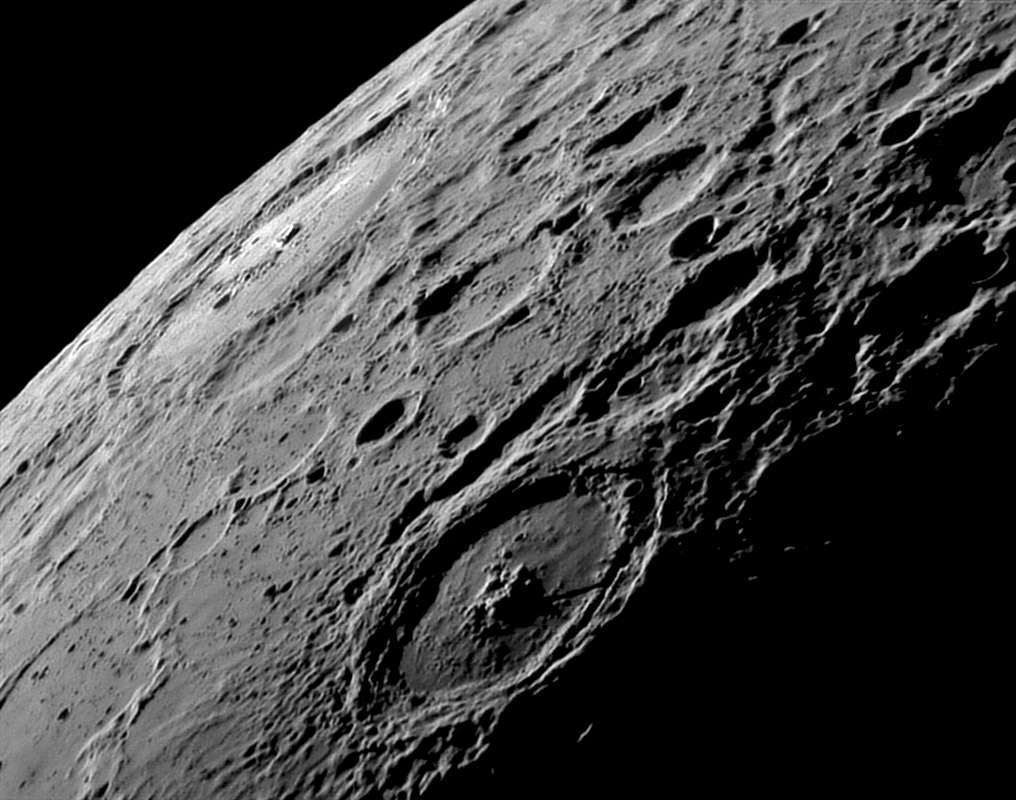April 17, 2008
Petavian View

image by Pavel Presnyakov, Kiev, Ukraine
Sunrise on Petavius provides wonderful views of a large complex crater, but also the surrounding areas are fascinating too. The most conspicuous background feature is the large crater Humboldt with a bright interior with dark mare on its edges and just barely visible radial fractures. Near the right edge of the image are three linear structures of interest. A bent rille that casts shadows cuts the floor of Furnerius, and the linear Hase Rille extends to the upper right. The broader and less well-defined Snellius Valley is like a series of oblong craters trending up and to the right above Petavius. Petavius itself exhibits many instructive features. Radiating away are ridges of ejecta that give way to secondaries showing up as dark pits at this illumination. The floor contains hills and rubble that seem to be coated with smooth material. Craters of Petavius' size often show the beginning of a transition to a peak ring surrounding the central mountain, and you can see it here.
Chuck Wood
Technical Details
08.04.2008, 16:08 UT. TAL-250K + VAC-135, b/w 1280x1024 15fps barlow 2x, 450 frames from 1350 in Registax4
Related Links
Rükl plate 59 & 60
Kiev Astronomy Club (with images by Pavel).
Yesterday's LPOD: Don't Squeeze!
Tomorrow's LPOD: A Little Archimedes
COMMENTS
(1) Congratulations to Pavel! Petavius is my favorite crater, and this is one of the best images I've seen. Chuck's description/analysis of Petavius and its surroundings is also great.
I've been invited to give another slide presentation about the Moon next month as part of Astronomy Day activities at a local nature center/planetarium. I'll be able to use this information in my program. This will be my fourth talk about the Moon since November. I always cite "The Modern Moon" and the Moon Wiki as sources and resources for anyone in the audience who is interested in learning more about the Moon.
Regarding Chuck's transition question--could the double rim on the western side of Petavius be the clue?
--Bill
(2) I recently came across this image which I believe is Petavius but I am not sure. If so, then Petavius has what appears to be some lava in it. LunarOrbiter5036 -- Andrew Martin SFO
(3) Andrew, take a look at this :
https://the-moon.us/wiki/Lunar_Orbiter_5_-_catalog_of_photographed_features
(especially compiled for those who want to know what's on the Lunar Orbiter 5 images).
Danny C.
COMMENTS?
Register, Log in, and join in the comments.



